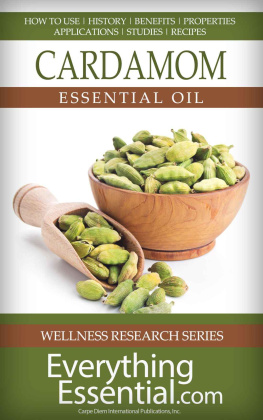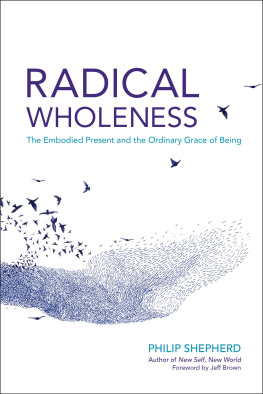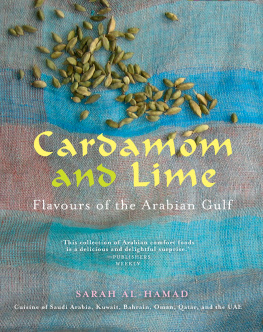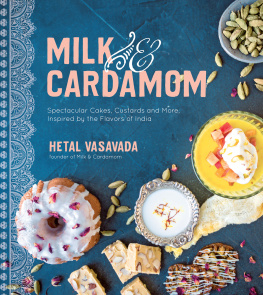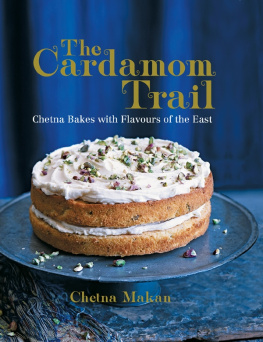Cardamom Essential Oil
Benefits, Properties, Applications, Studies & Recipes
Exclusive Bonus Video Webinar for Kindle Customers:
Attend and Watch a FREE Webinar Event on Emergency Preparedness with Essential Oils (Click Here) >> 
Additional Resources:
www.EverythingEssential.com
www.Survivalist.com
Copyright MMXIV CDI Publications, Inc. All Rights Reserved.
Disclaimer: Statements made in this research work have not been evaluated by the Food and Drug Administration. Recommendations described are not intended to diagnose, treat, cure, or prevent disease. Products referenced in this presentation are safe to use and specifically formulated to support wellness.
What are essential oils, and how might they be used for therapeutic purposes?
Essential oils are ultra-potent oils, extracted from plants and flowers that have been utilized in medicine for centuries. Presently, theyre most commonly used to supplement pharmaceutical medication, but they can also be an effective alternative to pharmaceuticals in the event that you dont have access to them. Before you dismiss essential oils as a means to support the bodys natural defenses against injuries and illness, take a look at the historical evidence of the oils medicinal competence in practice. Your average age-old medical text will demonstrate that essential oils, herbs, and plenty of other natural ingredients have, for thousands of years, successfully enhanced immune function to meet and defeat any number of ailments and injuries. Though traditional medicine is considered alternative now, it was once the gold standard. And, frankly, perhaps it still should be, as these natural age-tested remedies can fortify the bodys battlements against everything from simple maladies, like headaches, cuts and bruises, to serious diseases, like cancer.
Essential oils are deemed essential, because the oils are composed of the essence of the plant. The difference between essential oils and other oils like olive oil or vegetable oil, for instance is that essential oils have high volatility and reduced fixation, which results in faster evaporation, enabling their popular use in aromatherapy. Even at high temperatures, olive and vegetable oils dont evaporate.
Essential oils are especially necessary when it comes to a major natural or man-made disaster or some potential viral outbreak. In these types of dire situations, you may not have quick access (or any access at all) to your standard pharmaceutical supply; so essential oils, along with other alternative medicines, will be your go-to health aids in the case of social collapse, viral outbreak or devastating natural disaster. When medical access is null and void, alternatives to our modern-day standard are the only chance we have to keep pathogens at bay.
You probably dont realize that you already use essential oils every day. Theyre in perfumes, shampoos, soaps, ointments...theyre even used in furniture polish. Why are they found in so many aromatic products? Well, basically, because essential oils are super concentrated aromatic liquids, so their scent is remarkably strong. Lets put this into perspective: to steam tea, you use a few leaves of peppermint or juniper; to produce a single ounce of essential oil, five whole pounds of peppermint or juniper leaves are required. Some sources claim that to produce twelve pounds of essential oil would necessitate an acre of peppermint, juniper, or any other oil youre looking to produce en masse. Unlike vegetable oil, you dont often find concentrated therapeutic-grade essential oils sold by the tubload; instead the oils are often sold in easily carried small, dark bottles, perfect for your GOOD bag (Get Out Of Dodge). Which is exactly what this book is aiming to help you do get out of dodge with your most vital of essential oils intact, in particular a good supply of cardamom essential oil.
Why cardamom, you ask? Well, in order to get you quickly up to speed on this most essential of oils, below weve provided a condensed synopsis of cardamom, after which well outline in greater detail the oils history, properties, and common therapeutic uses, so that you the consumer might have a better understanding of the oils benefits and applications. Weve even provided supportive remedies for pure cardamom, as well as blended recipes that incorporate the valuable oil. Chapter 3 will further detail past scientific research on cardamom essential oil.
Now, lets get down to it Essential Oil 101: the Basics of Cardamom .

[Reference & Photo Credit: http://upload.wikimedia.org/wikipedia/commons/f/f4/Elettaria_cardamomum_-_K%C3%B6hler%E2%80%93s_Medizinal-Pflanzen-057.jpg ]
Summary: Cardamom, or Elettaria cardamomum, has been used for over 3000 years in Ayurvedic and Chinese medicine. The common traditional uses for cardamom were to support the bodys defenses against bronchial and digestive issues, but nowadays, its used to support the bodys defenses against everything from indigestion to nausea, from upset stomach to halitosis. The innumerable digestive properties of cardamom are due to its warmth, which bolsters the health of the pancreas, spleen and stomach.
Description: This oil is commonly extracted through steam distillation. The seed is most often used. The oil is clear in color, thin in consistency, and has a medium rich spicy woodsy scent.
Uses: Beyond those applications previously mentioned, additional uses for cardamom essential oil include supporting the bodys natural function against colic, halitosis, abdominal inflammation, coughs, dyspepsia, halitosis, debility, flatulence, headaches, sciatica, heartburn, lung infection, pyrosis, sinus infection, vomiting, senility and appetite loss. When it comes to mood and emotion, cardamom can help relieve stress, guilt, shame and fatigue.
Properties: Antioxidant, antiseptic, aphrodisiac, antibacterial, antispasmodic, anticarcinogenic, expectorant, astringent, diuretic, digestive, and stomachic properties.
Application: Dilute 1:1 with a carrier oil. You can apply topically, inhale directly, diffuse or use as a dietary supplement.
Safety Precautions: Cardamom has been approved by the FDA for internal consumption and so can be used as a dietary supplement. No other specific safety precautions were indicated.
Fun facts: In India, Europe and the Middle East, cardamom was often called the grains of paradise, due to its culinary significance. A prominent 17 th century British herbalist, William Cole, even deemed it the chief of all seeds, because he thought it stacked up protection against nearly any malady.
Chapter 1 Benefits of Cardamom Essential Oil
Cardamom oil offers a number of therapeutic benefits; but you may be wondering what these benefits are. In this chapter, well take a closer look at the history of cardamom and its many uses.
Cultivation of Cardamom
Cardamom, or Elettaria cardamomum, is in the ginger family, Zingiberaceae, and is native to Bhutan, Nepal, India and Pakistan; although, nowadays, Guatemala is one of the largest global cultivators and exporters of cardamom, after it was introduced to the country prior to World War I by the German, Oscar Majus Kloeffer, a coffee planter. Sri Lanka and India are also top cultivators in the modern age, and the spice has become one of the most expensive in the world, with a price per weight just shy of the two global leaders, vanilla and saffron.
Although there are two genuses of cardamom Amomum and Elettaria the main type used in producing commercial essential oils is Elettaria, so we will focus on its properties and history. Theophrastus, the Greek father of botany, actually differentiated between the two cardamoms all the way back in the fourth century BCE. Known as green cardamom and true cardamom, Elettaria cardamomum is found across India through southeast Asia to Malaysia, while Amomum cardamom is found throughout Asia and Australia. The Elettaria genus is a cool and minty spice, while the Amomum genus is a hot spice.

